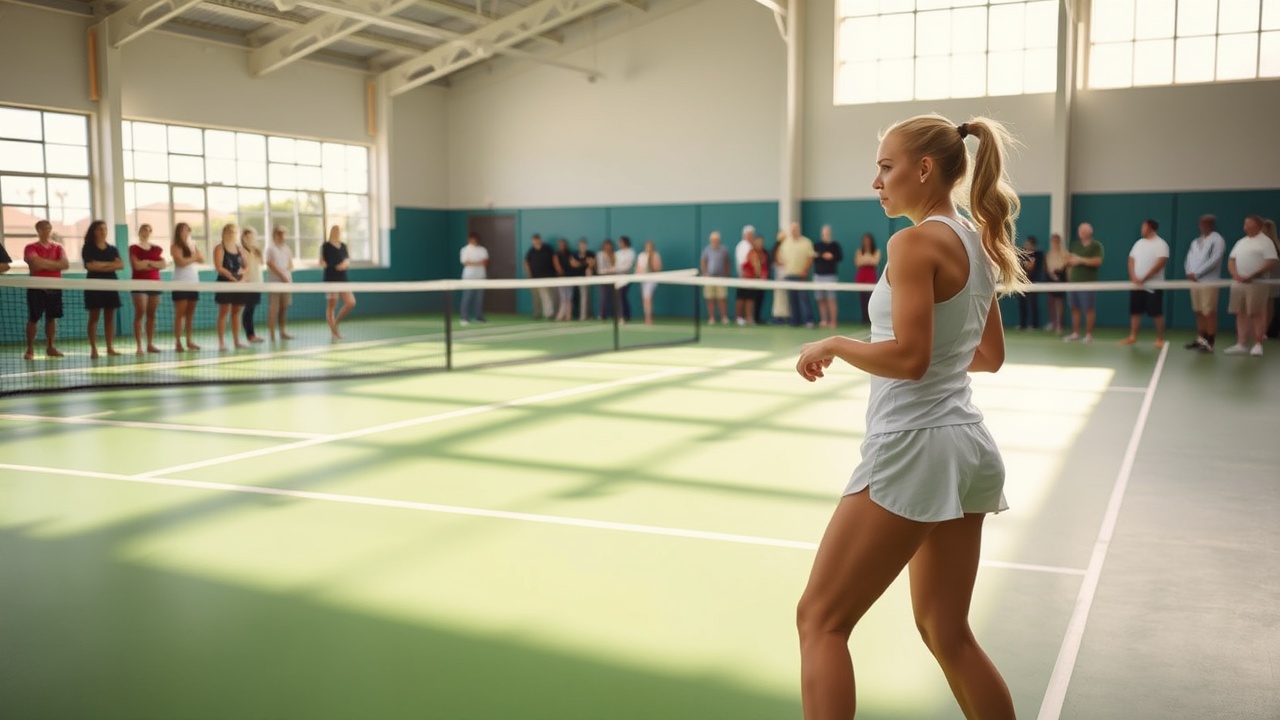The Scarcity of Female Coaches in Professional Tennis
In the realm of professional tennis, a pressing issue has emerged surrounding the scarcity of female coaches at the elite level. As evidenced during the 2025 French Open, only a handful of women occupied coaching positions among the top female players, highlighting a significant gender disparity in the sport. The journey of former player Sandra Zaniewska serves as a beacon of hope in this ongoing conversation.
Zaniewska’s Transformation
Zaniewska’s story is one of unexpected transformation. In her final months on the professional circuit, she faced uncertainty about her future after retiring at just 25. Although she had consistently rebuffed offers to coach throughout her playing career — remarking
“No chance”
to suggestions of stepping into a coaching role — her perspective dramatically shifted when fellow player Petra Martic sought temporary assistance due to an injury. With no immediate plans and limited finances, Zaniewska agreed to help Martic, initially viewing it as a short-term engagement that would ease her transition away from tennis.
However, this brief stint blossomed into a long-term commitment as Martic ascended to No. 14 in the global rankings. Zaniewska realized that coaching ignited her passion in ways she had never anticipated. She reflected in an interview,
“I loved it, and I remember thinking, ‘Wow, I was meant to do this job.'”
Since then, she has coached notable players, including Alize Cornet and currently Marta Kostyuk, reinforcing her status as a rare female presence among elite coaches.
The Gender Disparity
Despite the progress made by individuals like Zaniewska, the overall lack of women in coaching positions remains disheartening. Research shows that only about 12 out of 128 players participating in major tournaments like the French Open are coached by women. This disparity raises questions about the systemic barriers hindering women’s advancement in coaching, particularly within the highly competitive atmosphere of a sport that often prides itself on promoting equality.
Challenges Faced by Female Coaches
Several key factors contribute to this imbalance. Nicole Pratt, a former player and current coaching lead at Tennis Australia, has extensively studied the complexities involved. She identifies a lack of self-confidence in aspiring female coaches as just one facet of a multifaceted challenge. Bias against women and societal expectations often pigeonhole them into roles deemed more suitable for females, such as coaching young girls, further complicating their entry into coaching opportunities.
Additionally, the demanding travel schedule and lifestyle associated with coaching can deter women, especially those with familial responsibilities. Unlike players, coaches are often placed in precarious situations where they must balance professional obligations with personal life, a challenge exacerbated by the absence of maternity policies geared towards coaches. The professional’s landscape presents a stark choice: to either pursue career aspirations at the cost of personal commitments or remain sidelined.
Another underlying issue is the logistics of travel and support roles in professional tennis. Many players, especially those on tight budgets, tend to hire coaches who can also serve as hitting partners, often favoring young male coaches who fit this dual role. This perpetuates a cycle where women, who may not meet that dual criterion, find it even more challenging to break into coaching.
Initiatives for Change
As the need for greater representation of women in coaching positions rises, initiatives like the WTA’s Coach Inclusion program demonstrate a concerted effort to bridge the gap. Launched in 2021, the program aims to create pathways for aspiring female coaches by providing them with the resources and networking opportunities necessary to thrive in the competitive tennis environment. This initiative has already shown early success, with several women who participated going on to gain prominent coaching positions.
Advocacy and Future Prospects
Amidst these encouraging developments, challenges persist. Iconic figures like Billie Jean King have voiced concerns about the visibility of women coaches, urging industry stakeholders to rethink hiring practices to promote inclusivity. According to King, seeing women in coaching roles is essential for young female players, as it sets a standard of representation:
“You have to see it to be it.”
Zaniewska remains committed to using her unique position to advocate for female coaches, hoping to inspire the next generation. She noted,
“I know there are other coaches out there who are eager to learn and very good at what they do; they’re just not getting the chances to do it.”
This sentiment echoes a broader call to action, as various organizations in the sport work to dismantle barriers and encourage more women to pursue coaching roles.
As change takes shape, the involvement and support of existing female professionals like Zaniewska and Pratt could reshape the narrative of coaching in tennis. The hope is that, gradually, the culture will evolve to not only embrace inclusivity but also create a robust system that allows female coaches to thrive alongside their male counterparts.




